Tanks and Anti-Tank Warfare
The deadlock of trench warfare spurred the development of new
technologies, among them were armored fighting vehicles, both wheeled
and tracked. First use by the British at the Somme in the fall of
1916 did not lead to a breakthrough. A massed tank attack at
Cambrai in November 1917 was promising, but a German counterattack
recovered the captured territory. The French and to a much lesser
degree the German developed tanks, but the United States was unable to
produce and delivery any in time to the Western Front. Copies of
the French Renault FT were built as well as a new joint development
with the British, the Mark VIII.
The German adapted tactics to deal with the tanks. They produced
special anti-tank guns and placed light field artillery closer to the
front. The built concrete barriers and traps and developed
anti-tank mines. Although some proponents of tanks claimed that
tanks won the war, this is a myth. Although tanks were useful,
Allied infantry and artillery were able to make progress without the
support of tanks. Notoriously unreliable, it took another decade
and a half for tanks to become capable of revolutionaizing warfare.
Army Signal Corps photos in the National Archives give a good feel for the technology of the time.
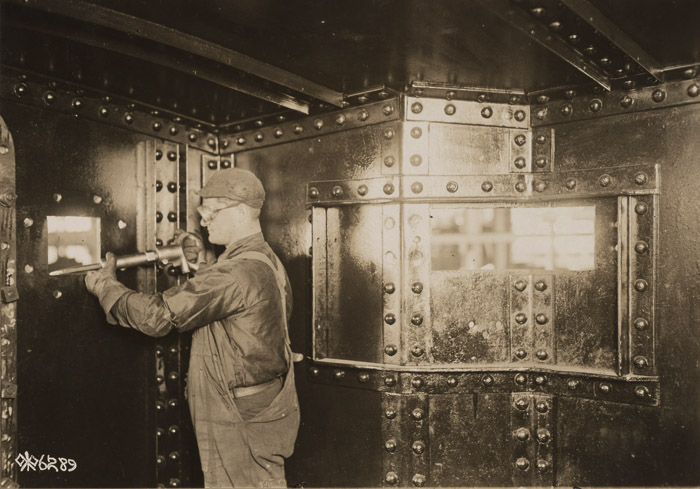
Construction of American armored cars, Judson Manufacturing Co, San Francisco.
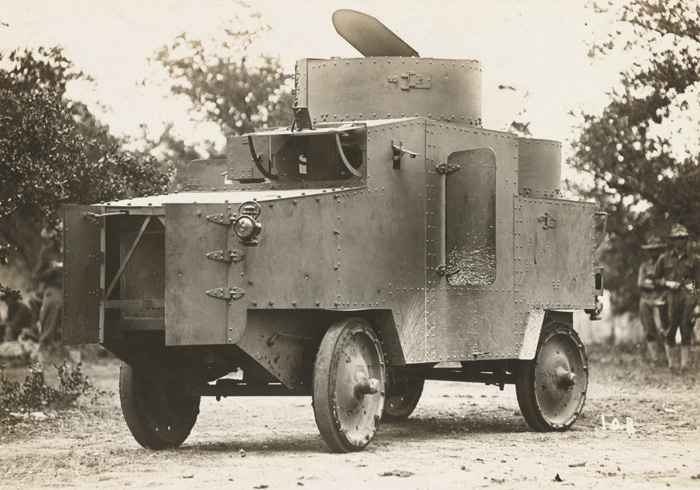
Armored car; note the bullet dents in the armor.
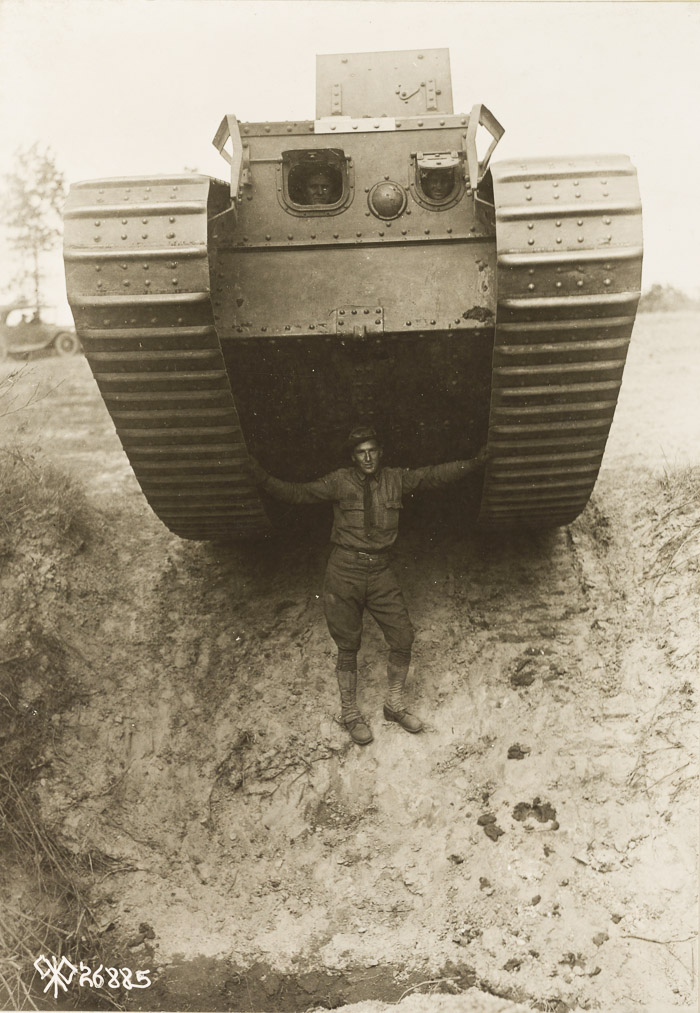
Tank Corps School, Camp Polk, Raleigh, NC
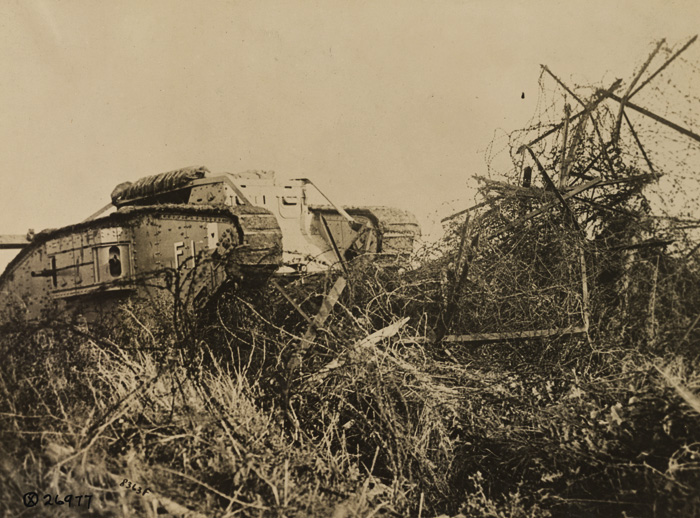
Brisih tank advancing over German barbed wire enanglements. The
tank tears through entanglements as though it was made of paper.

Method of loading and unloading tanks from flat car. Taken at Exposition Park, Los Angeles, CA
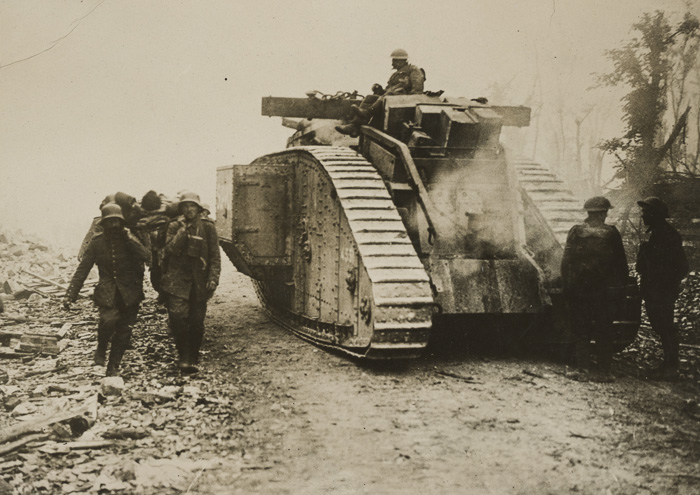
A heavy British tank advancing on the Western Front while German
prisoners are bringing in wounded. This is not an uncommon sight
during the fighting.
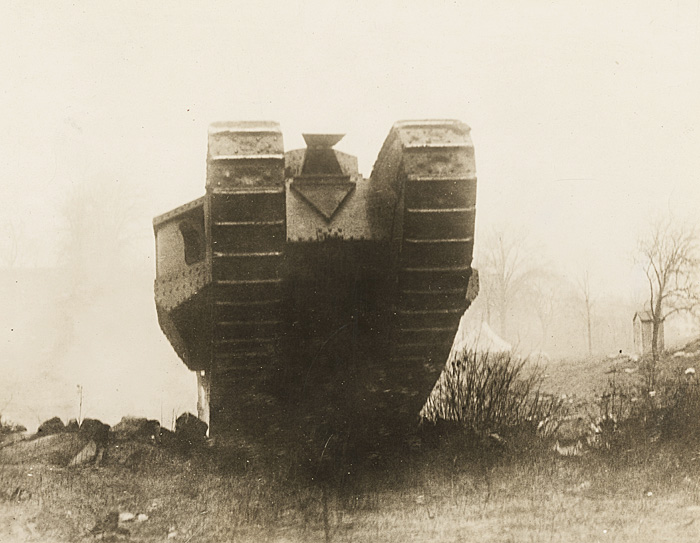
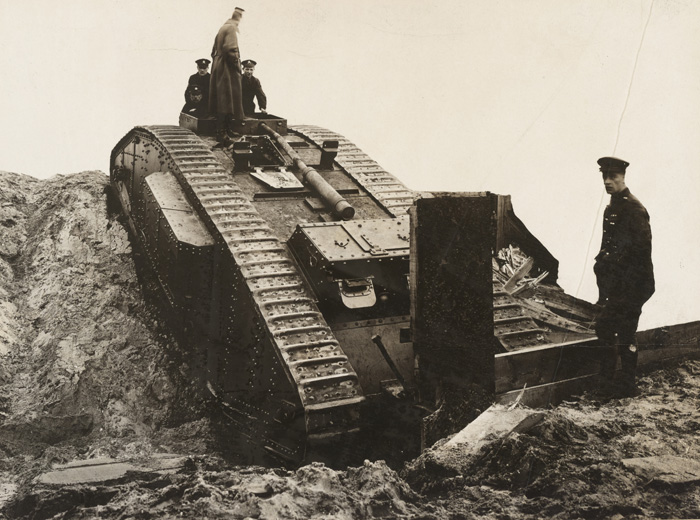
British tank "Britannia".
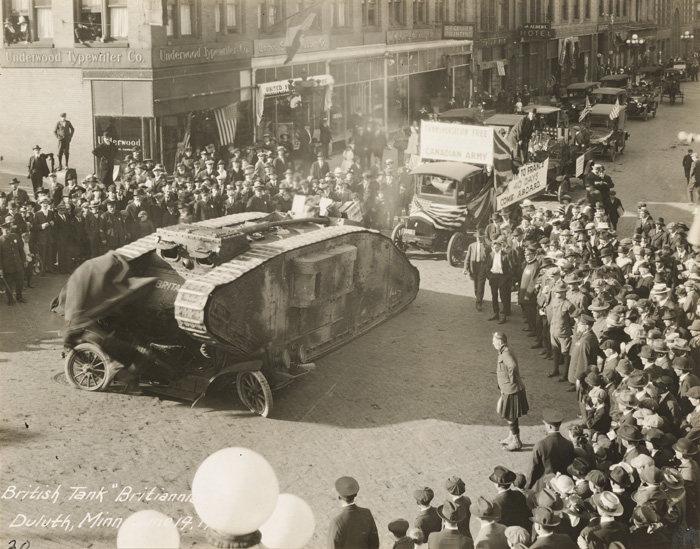
Duluth, MN. British tank "Britannia running over Ford car.
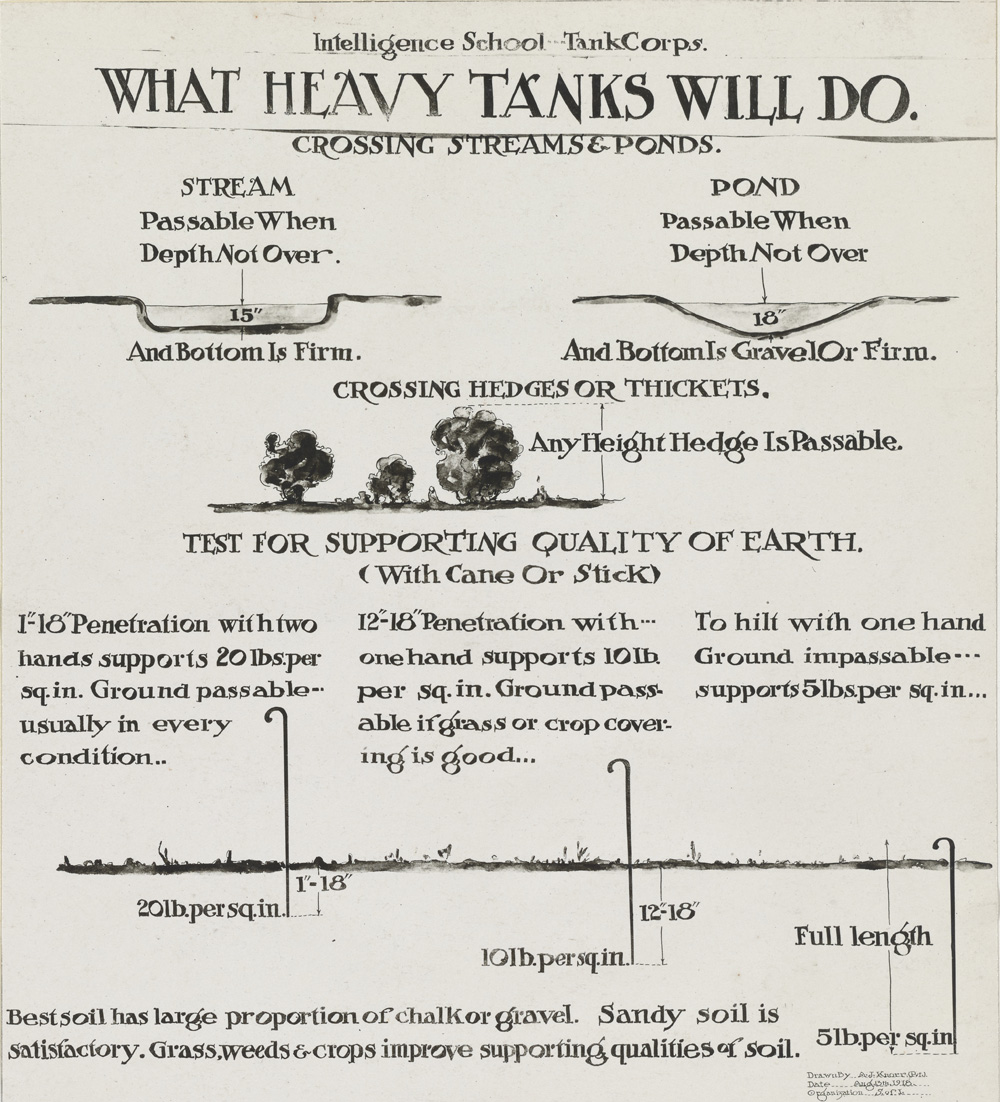
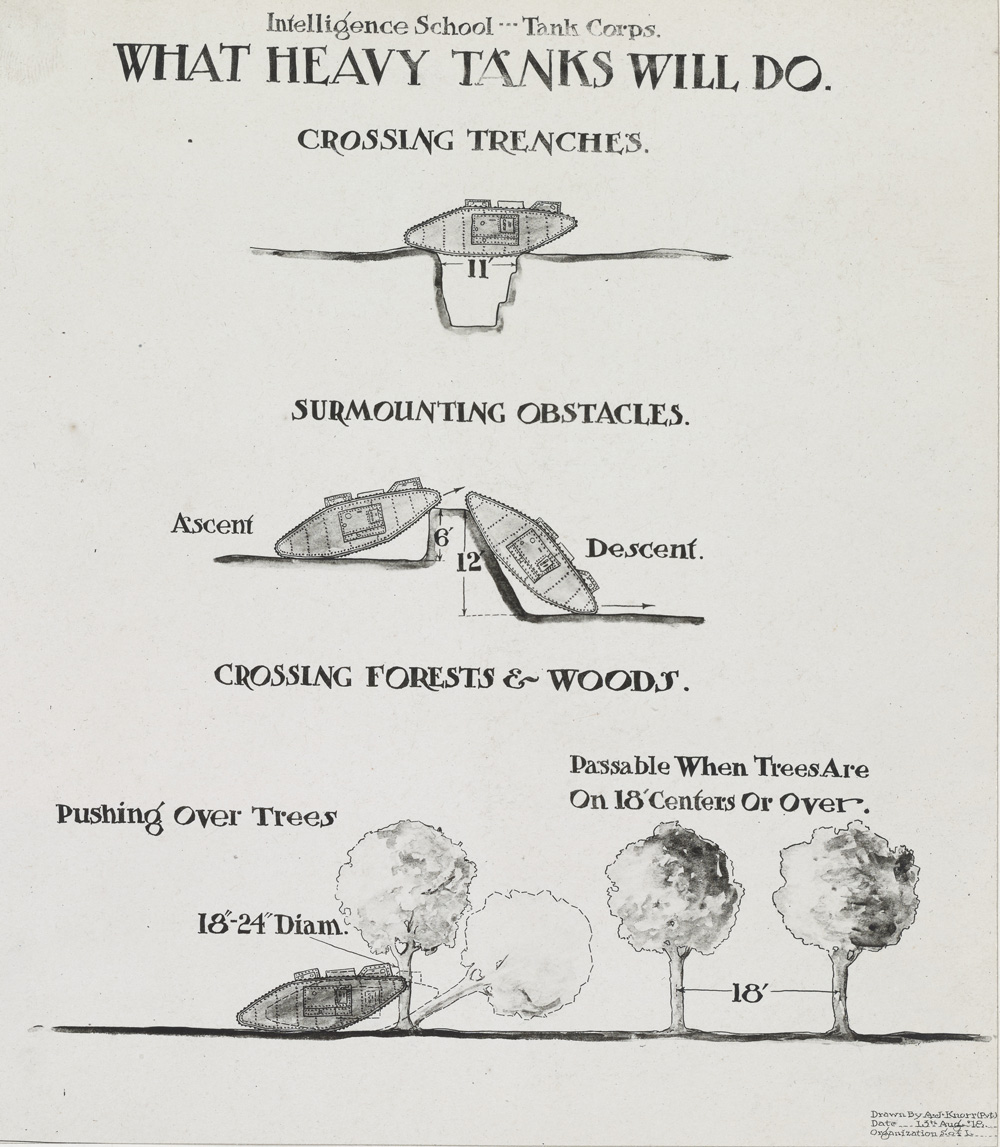
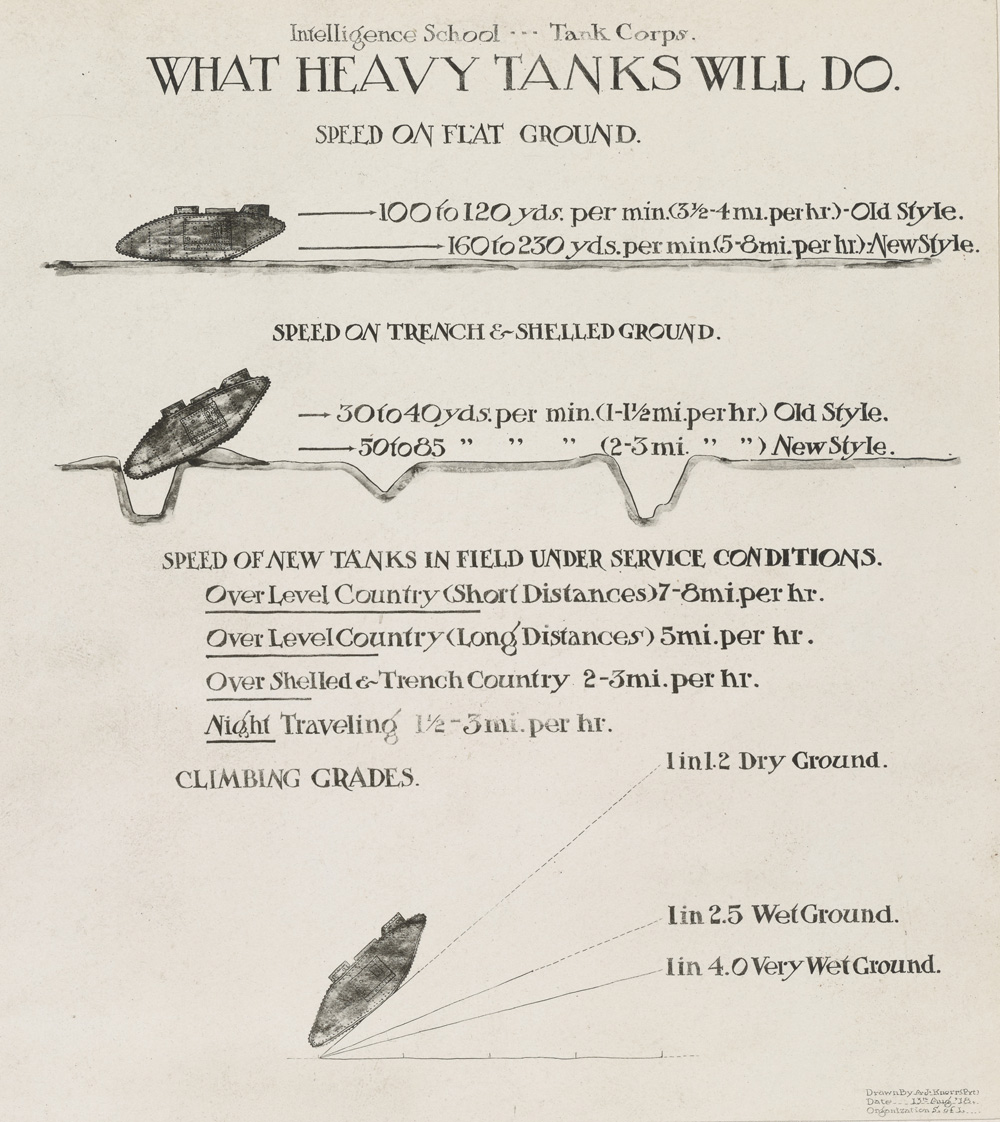
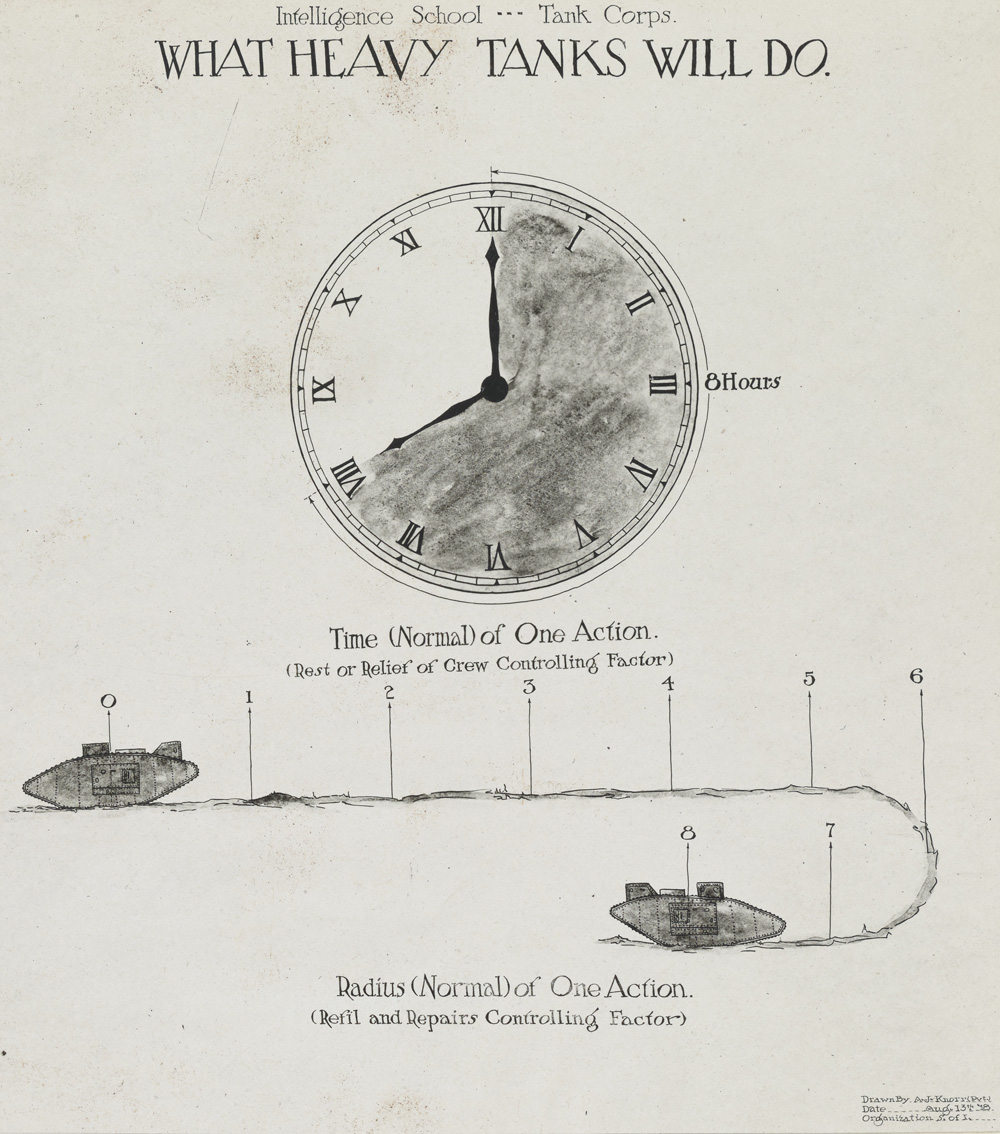
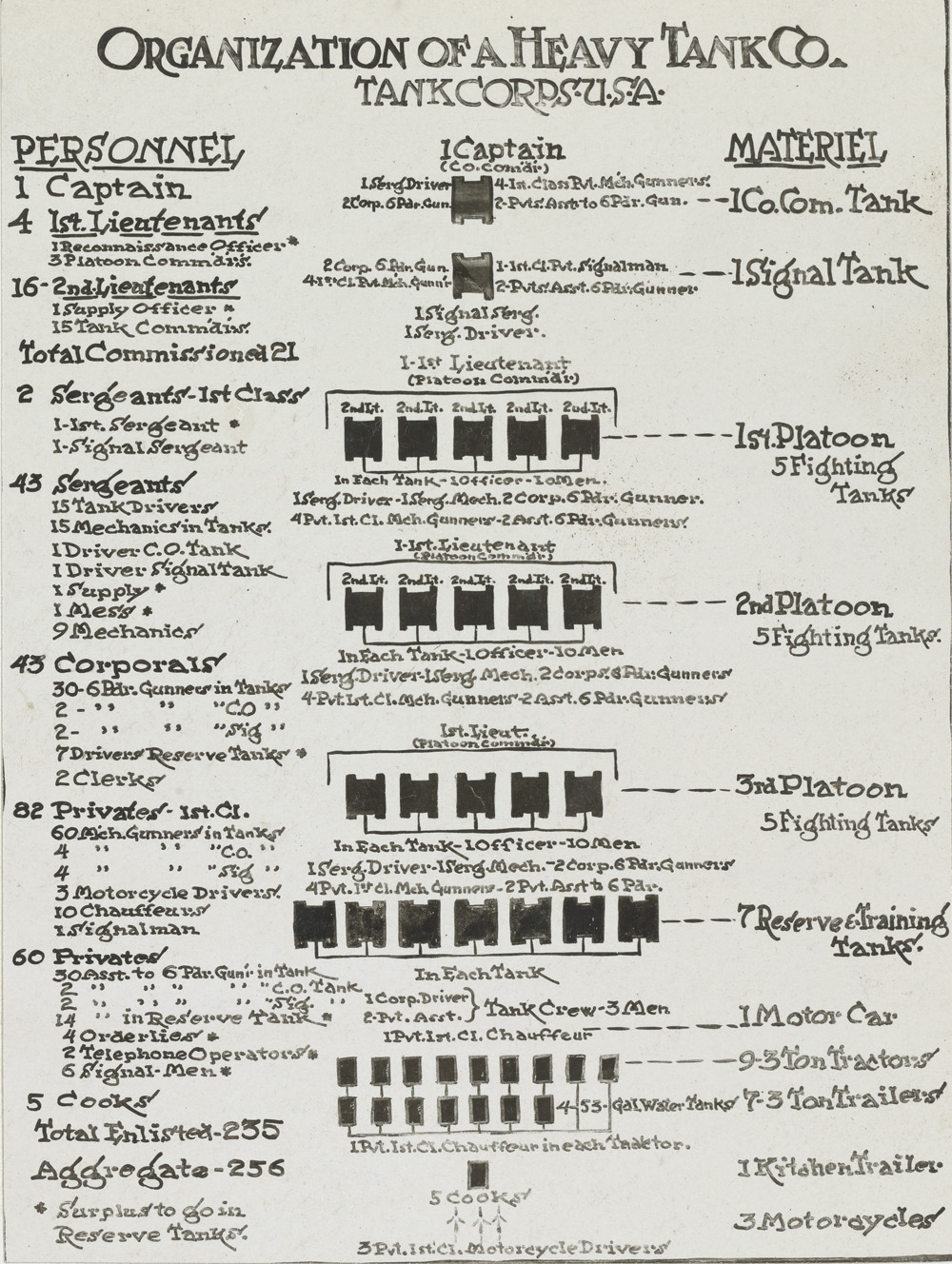
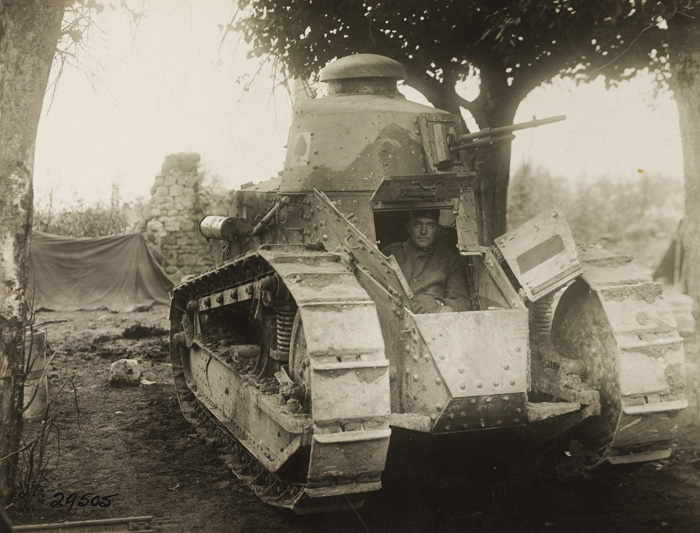
French Renault tank equipped with machine gun, used by 1st tank brigade, USA. Varennes.
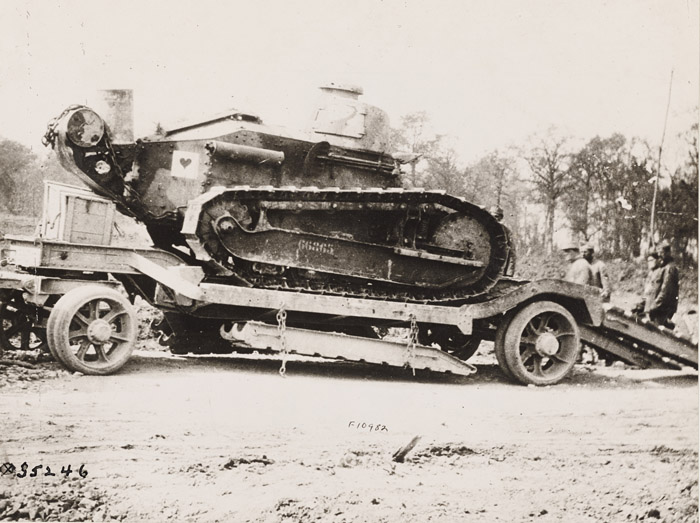
Small French tank carried on truck. When tanks are needed in a
great hurry at the front, they are often transported by the trucks
which are speedier. When a tank is damaged it is brought back to
the repair shop on a truck.
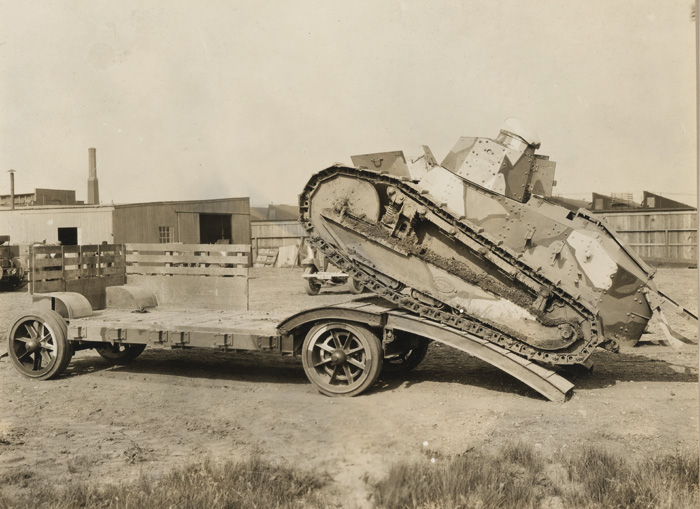
This American two-man six ton tank closely resembles the famous French
Renault, the terror of the German machine gun nests. For quick
transportationto places of safety the Ordnance Engineers have provided
a rubber tired, ball-bearing trailers. An American artillery
tractor being provided to haul the entire outfit over any kind of a
roadway.

American Whippet Tank.
American tank is dragging an extra supply of fuel on a platform.
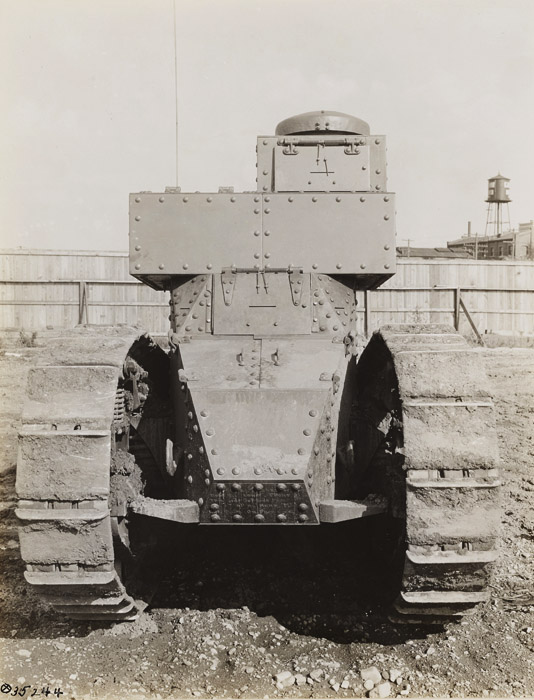
Radio equipped signals tank
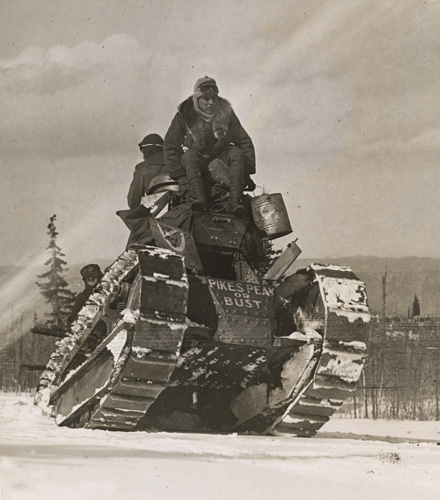
Victory loan tank plowing along at altitude of 10,000 feet in its
sensational dash up Pike's peak. It broke all altitude records
for war machines when it reached a height of 11,200 feet. It also
broke records for continuous distance traveled and penetrated farther
into the snow than any other vehicle has ever done at this time of the
year. It had to buckdrifts of from 4 to 20 feet.
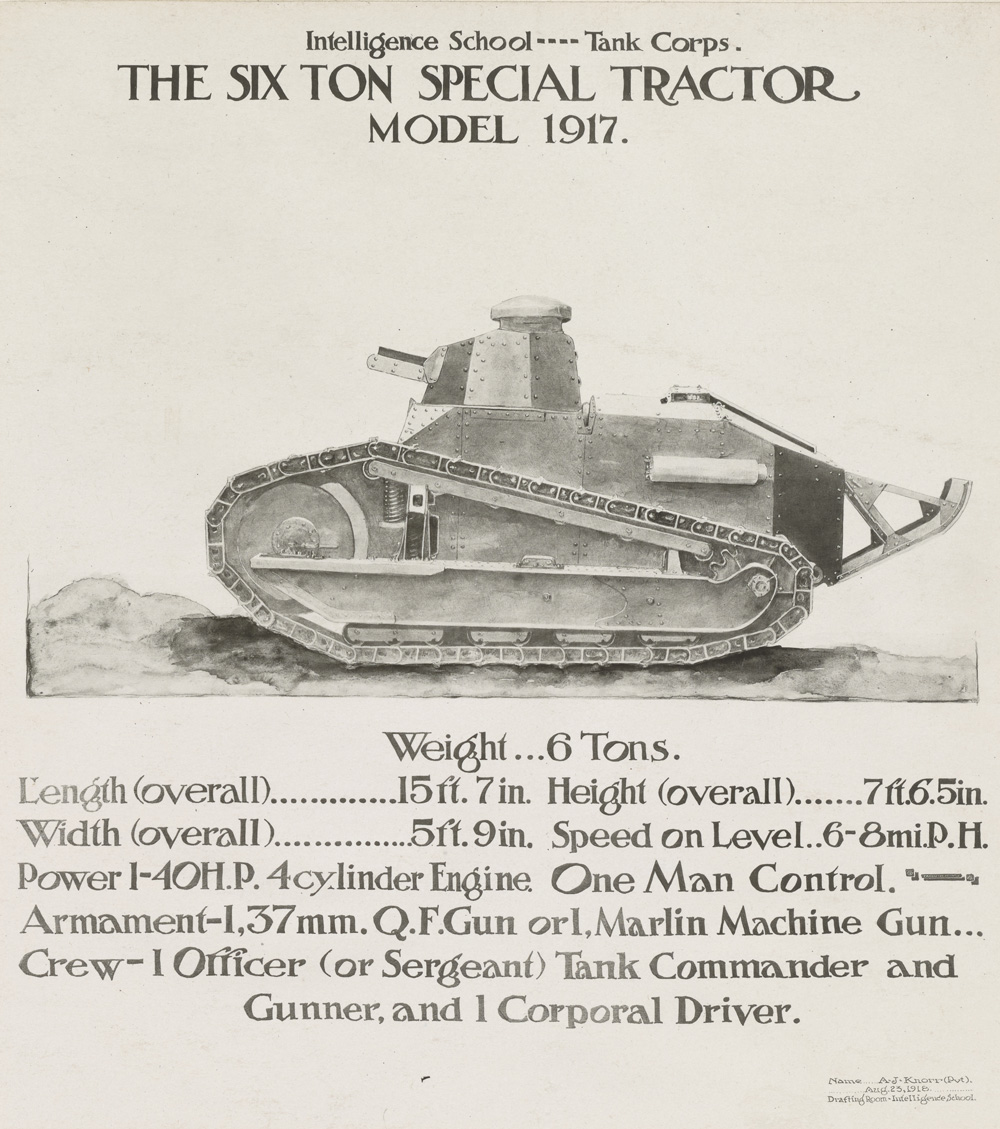
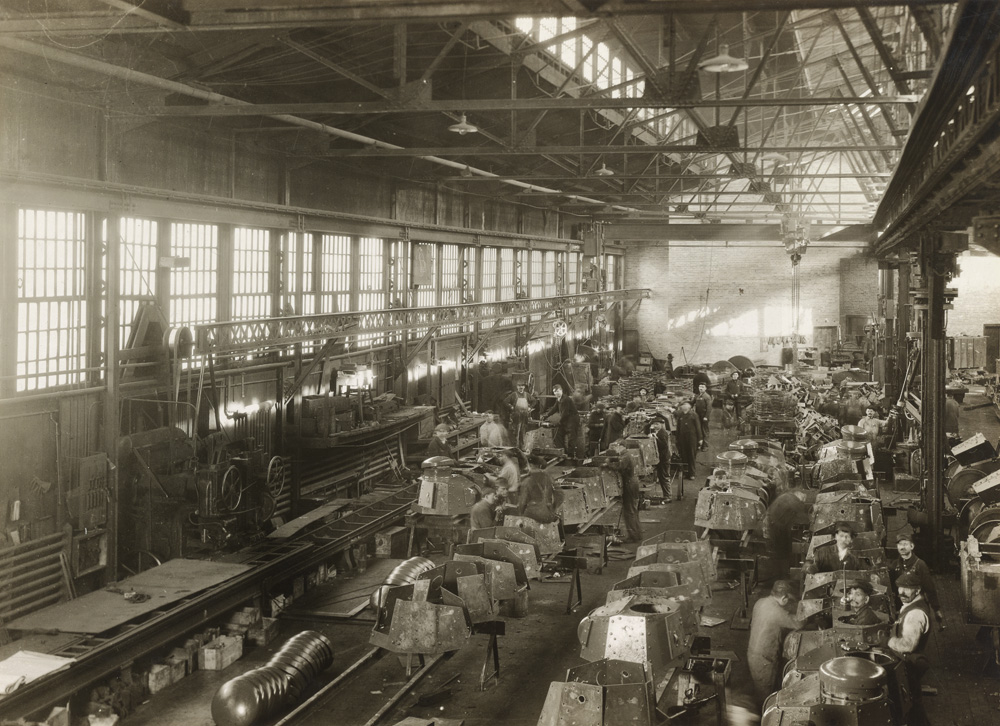
Manufacturing tanks; the Van Dorn Iron Works Co., Cleveland, OH. Assembling turrets for tractors.
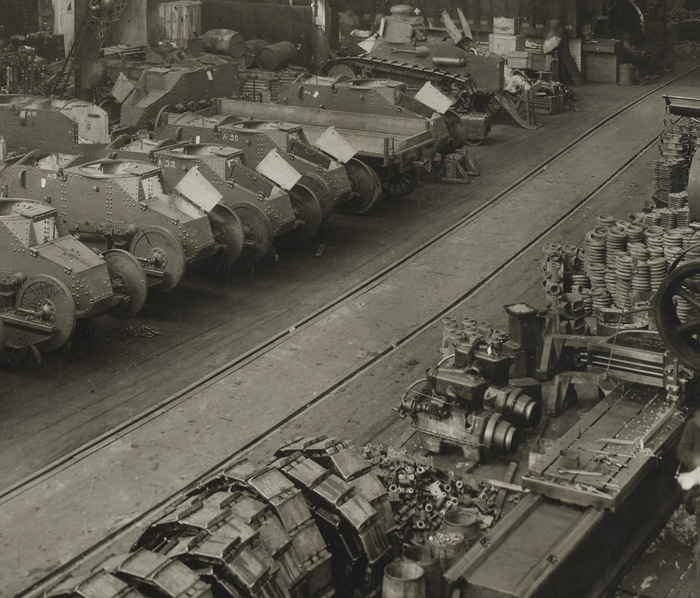
Van Dorn Iron Works. General assembly shop.

Manufacturing tanks; Van Dorn Iron Works Co, Cleveland, Ohio. Portion of tractor storage department.
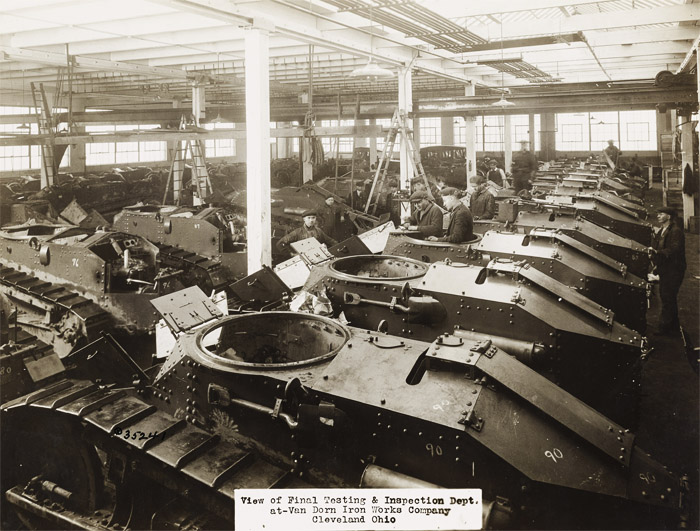
Manufacturing tanks; The Van Dorn Iron Works Co, Cleveland, OH. View of final testing and inspection department.
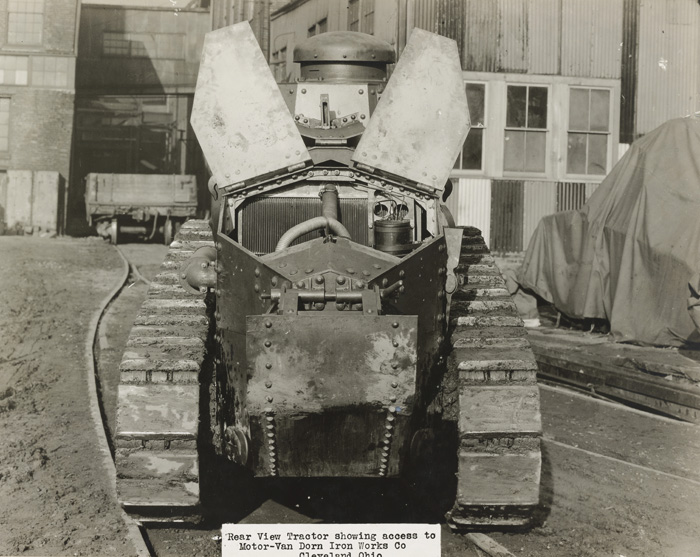
Van Dorn Iron Works. Rear view of tractor showing access to motor.

Tank engine. Reat view of tank engine showing the control levers
and ignition system in the plant of the Ford Motor Co, Detroit, MI.
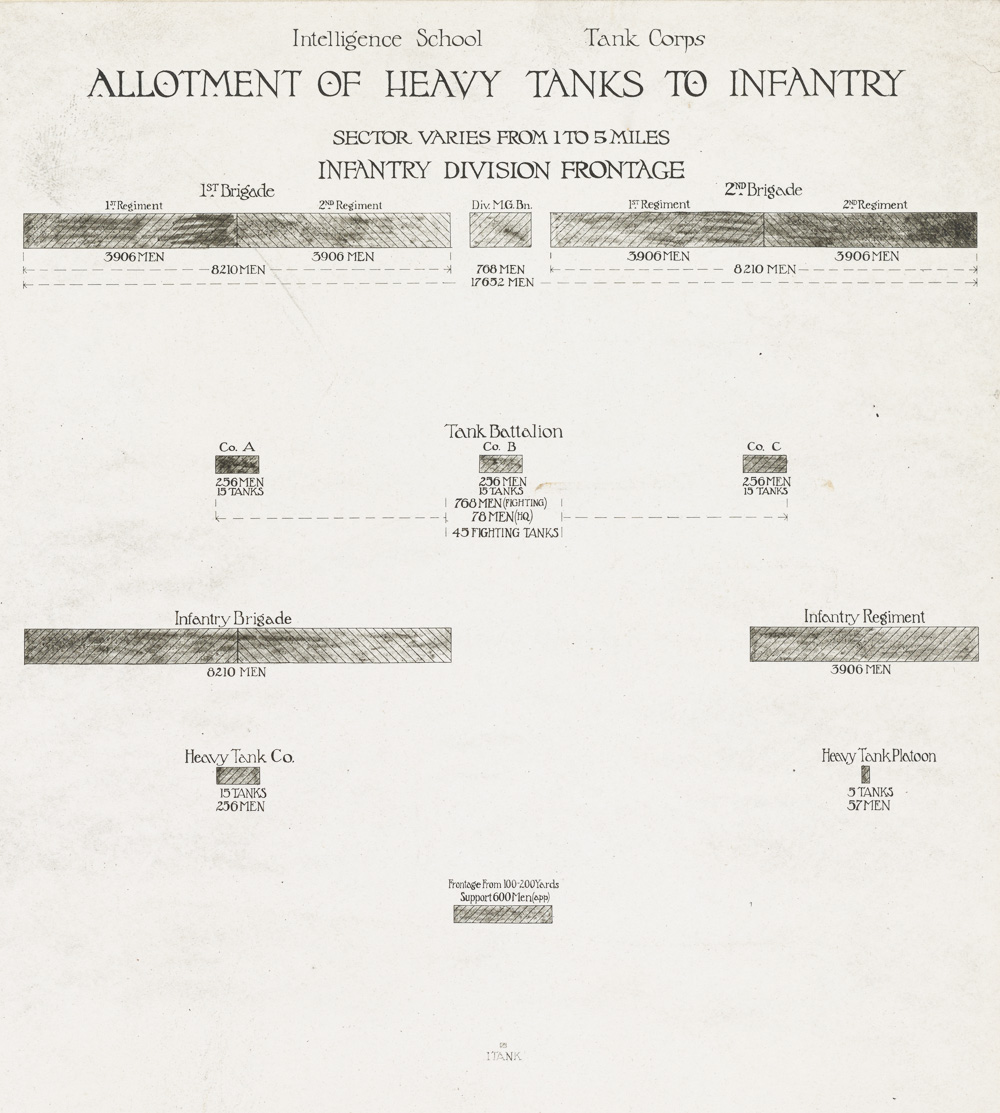
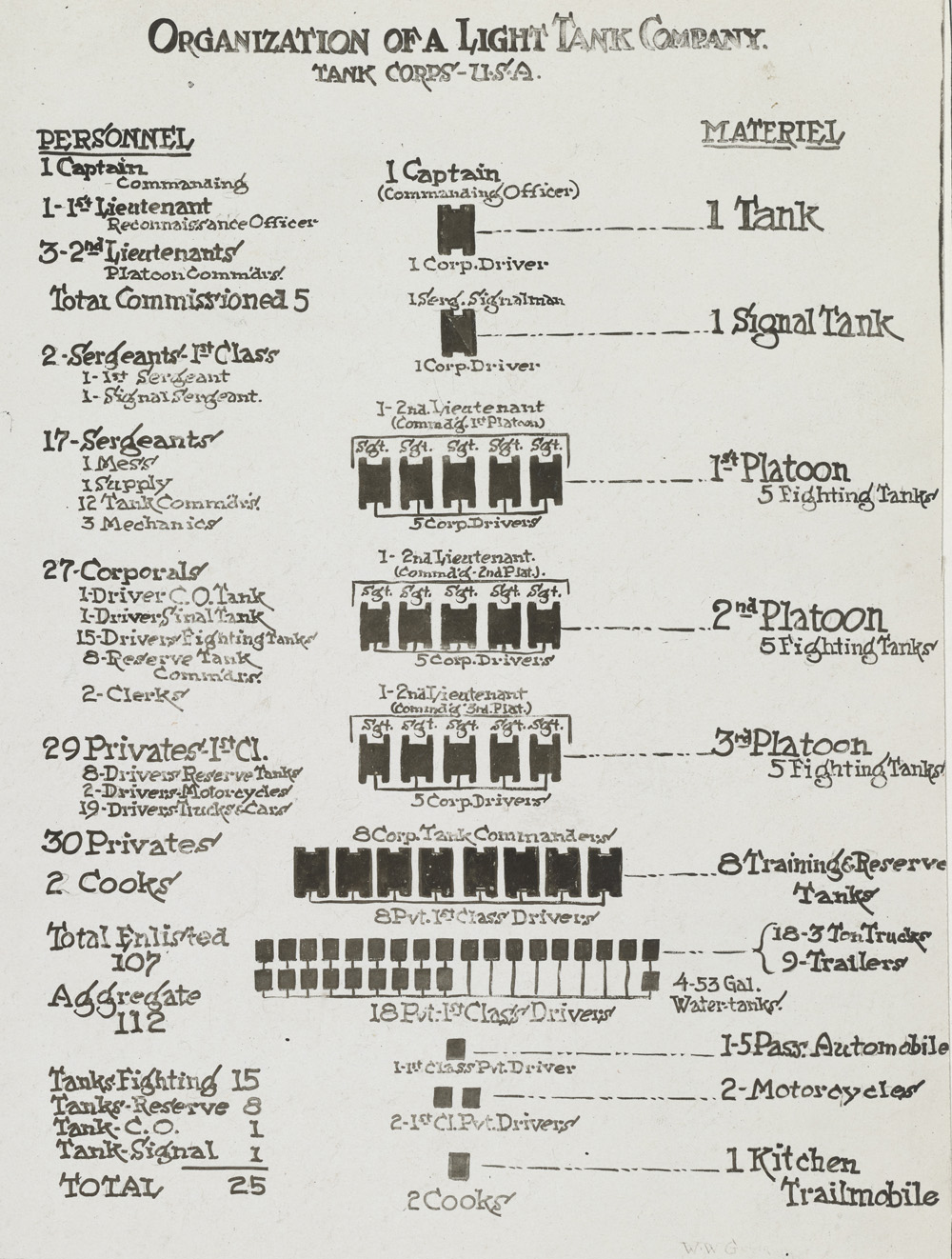
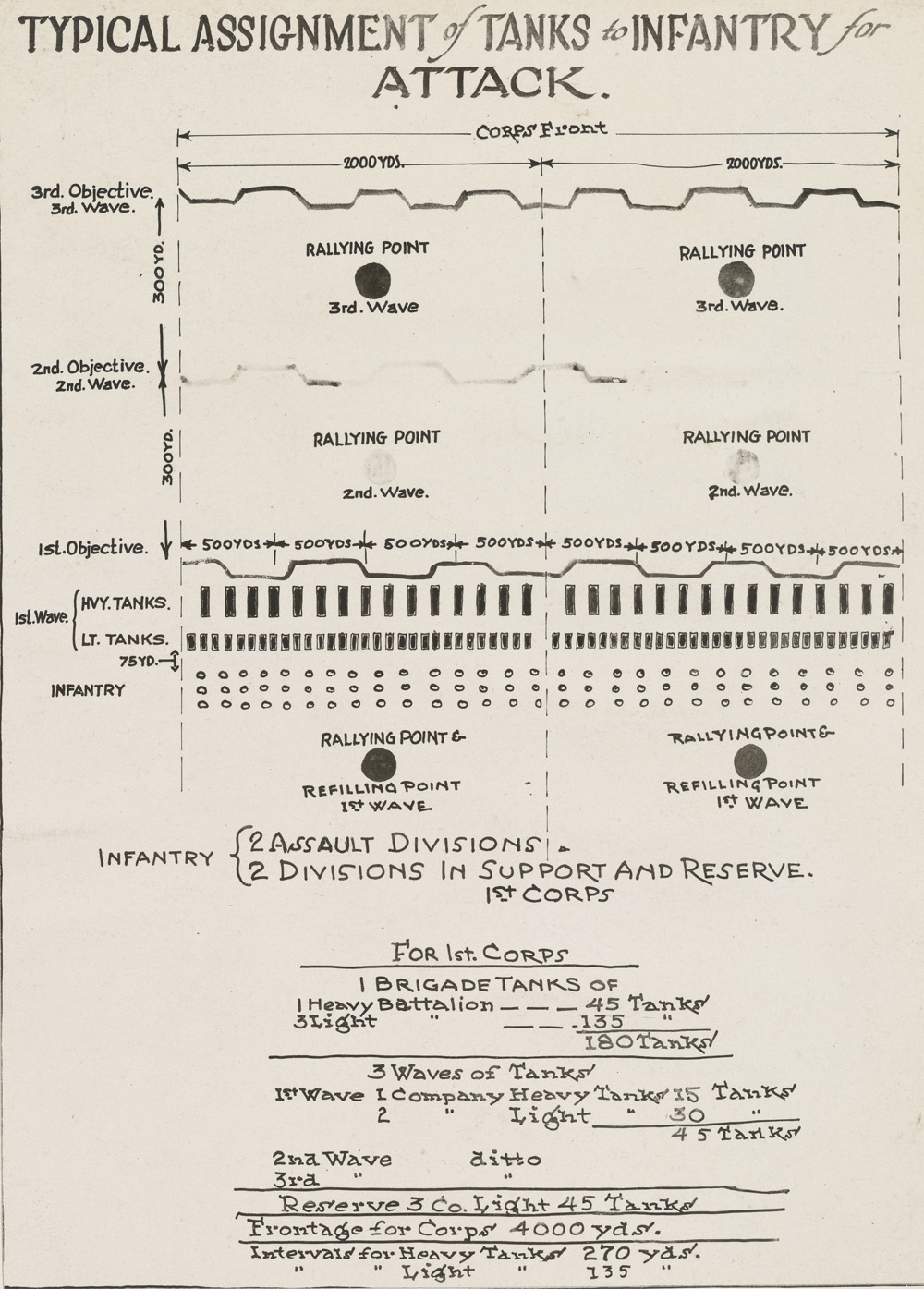
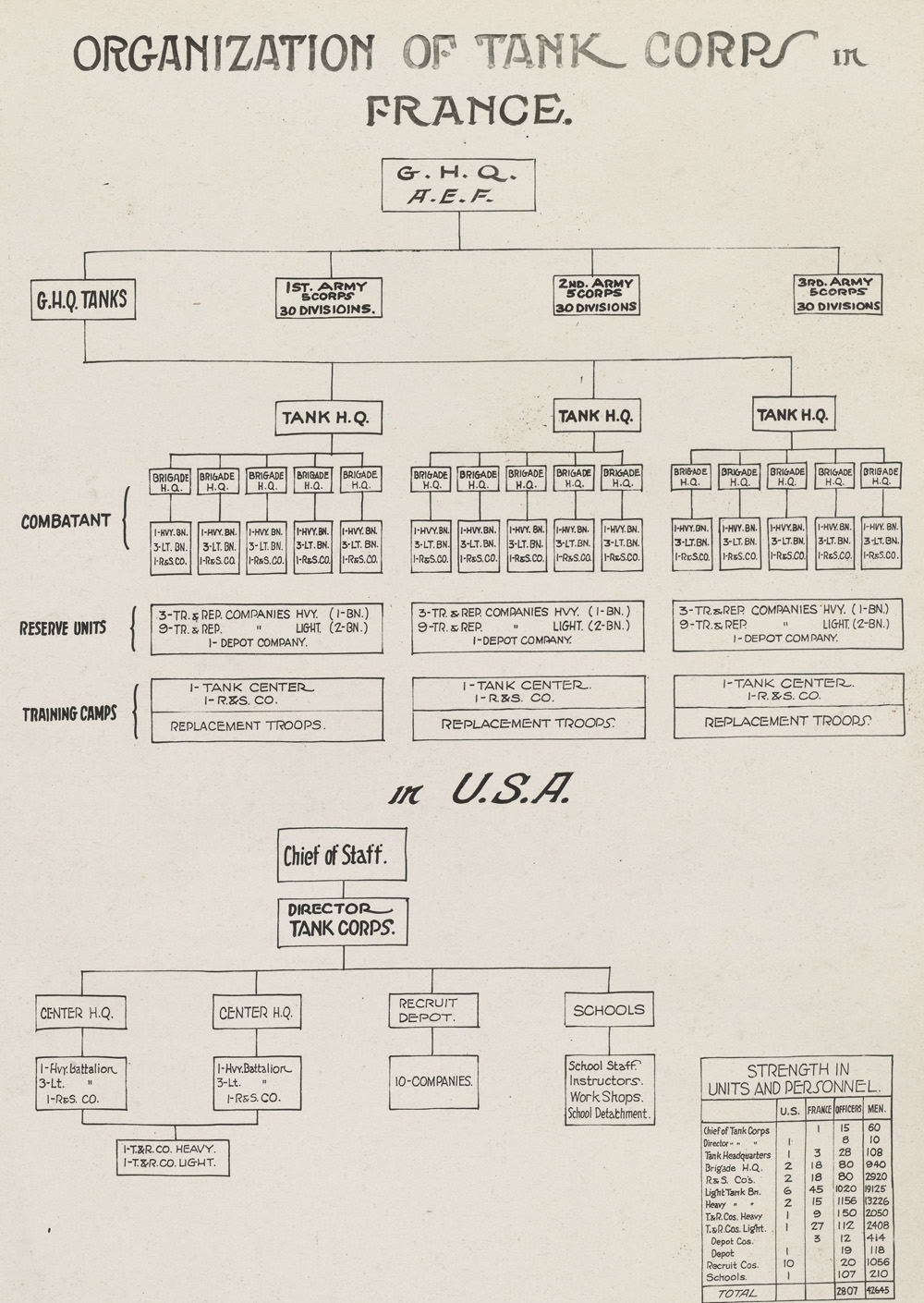

"America" the first large American built tank completed. Rear
view of the "America" the first large American built tank to be
completed. The tank is said to be much larger in every way than
the tank Britannia which has visited almost all the large cities of the
country. In this photograph, the size of the tank can be seen at
once. The "America" made its first appearance in Boston in a
parade, April 17, 1918.
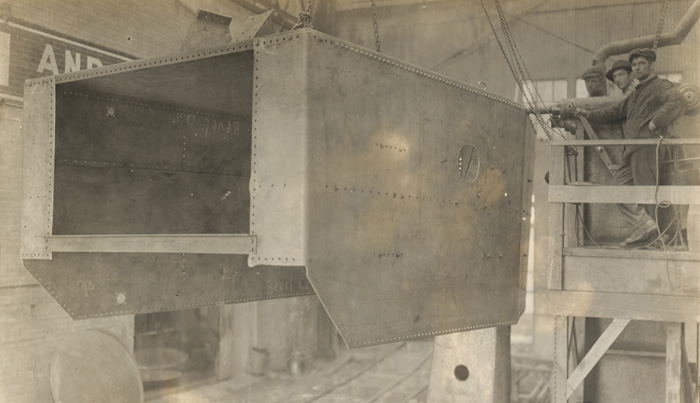
Rivets being driven into tanks by a bull riveting machine. Turl Iron and Car Co, Newburgh , NY
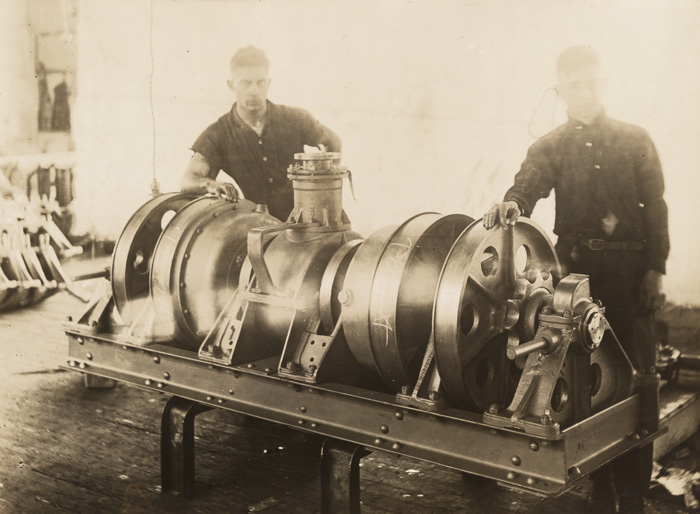
Manufacturing motor equipment for gov't. Loconobile Co of
America, Bridgeport, CN. Transmission complete for Mark VIII
tank, with men to give scale of size. Brake Bands are not shown.

A Cadillac-produced Liberty Engine. Detroit, MI
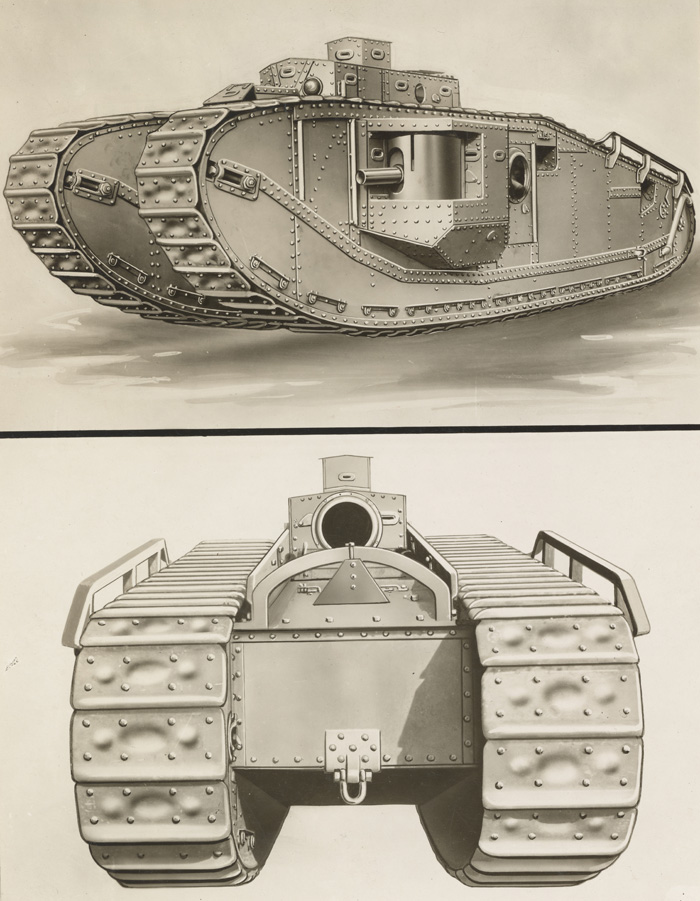
Mark VIII tank. Three quarter side and rear view.

Testing Mark 8 Tank. Tank built by the Locomobile Co of America,
Bridgeport, CN coming head on over hill in trial outside of Bridgeport.
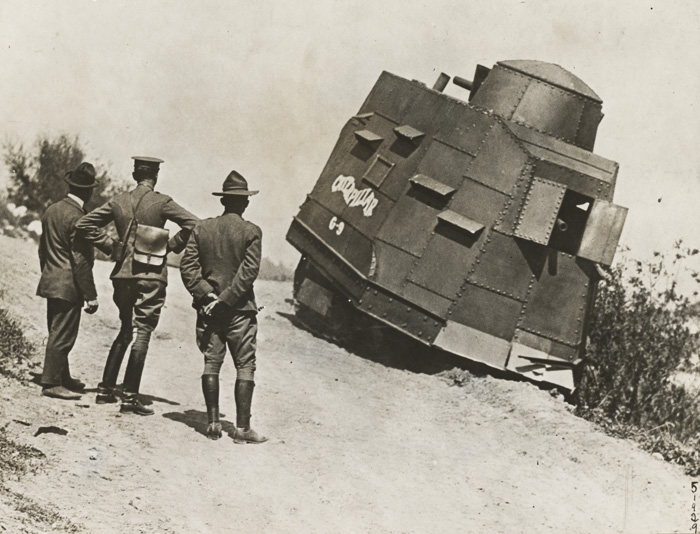
Testing of American Caterpillar Tank. Newly completed American
tractor-tank being demonstarted to US Army oficers at Los Angeles, CA.

Ford Motor Co., Detroit, MI. Ford "tank" for army use.
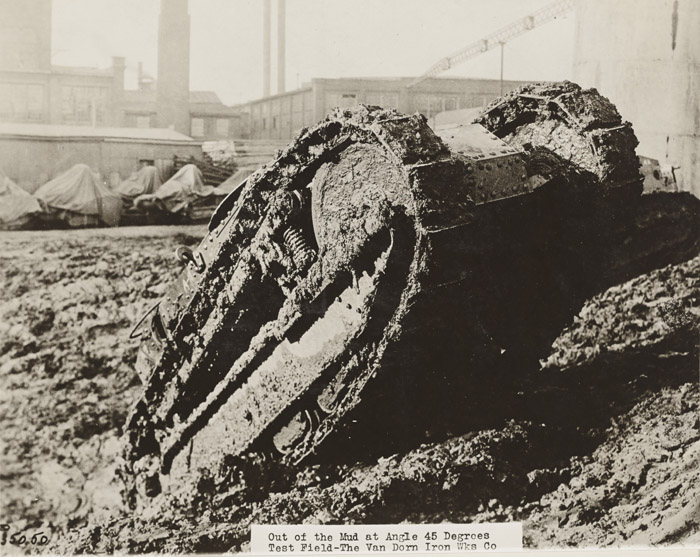
US Army tank getting out of the mud at an angle of 45degres. Test field - The van Dorn Iron Works Company.
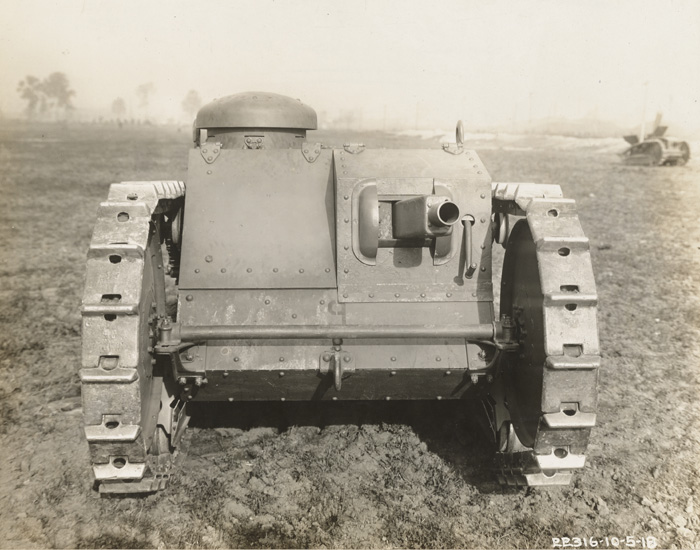
Small American Tank.
Front view of the two-man tank manufactured by the Ford Motor Co, Detroit, MI
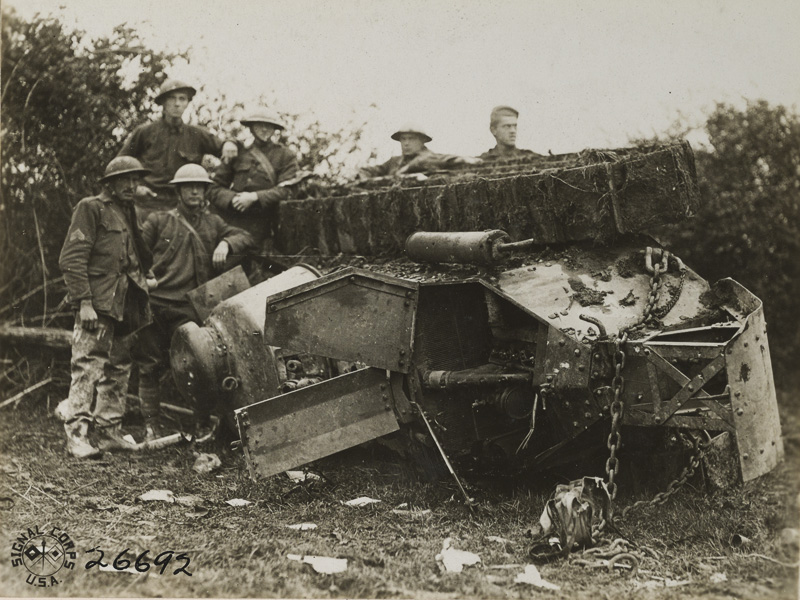
French tank overturned by a shell which exploded close to its side. Near Cierges.
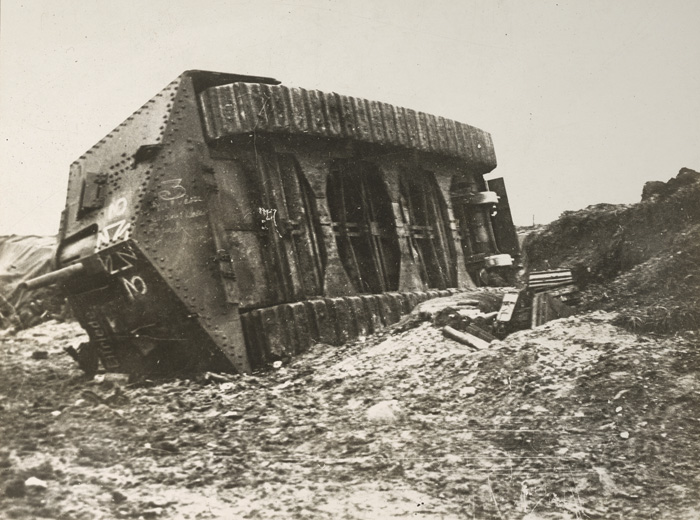
This is the first photograph to reach this country of the capture of a
German tank. the tank carried a cannon of 57mm on front and two
machine guns on each side. It was turned over by the force of an
explosion from a French shell near a quarry at Montdidor on the Aisne
front.
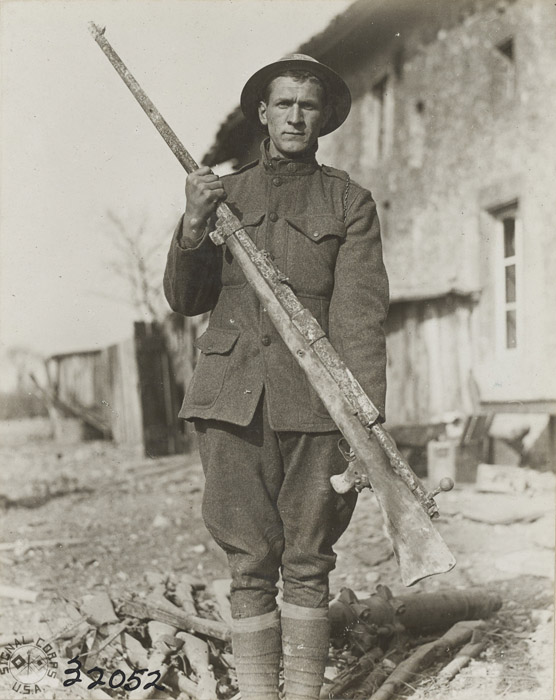
German one man anti-tank gun picked up at St Juvin.
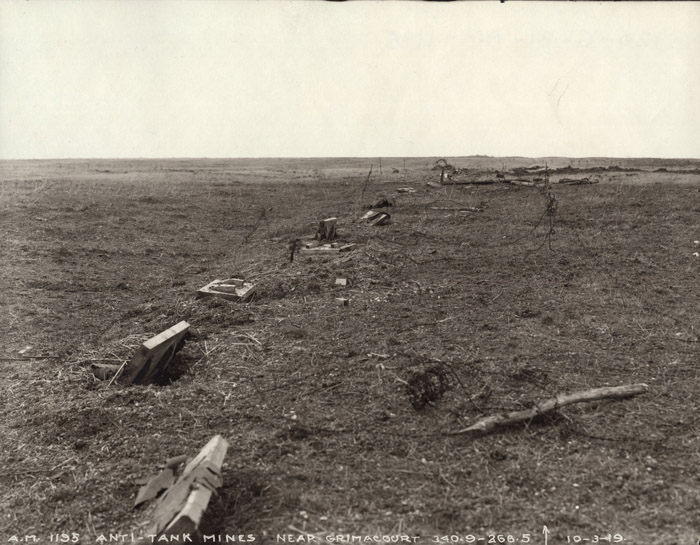
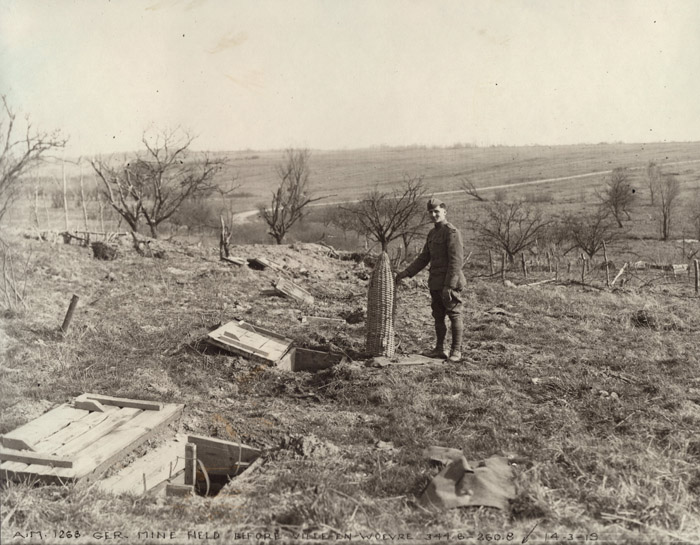

Elaborate trap rected by the Germans. In Proneville, the Germans
erected an elaborate ferro-concrete trap. The gap was large
enough to permit the ingress and egress of a motor lorry, but would
have stopped a tank. To the consternation of the enemy, the
Canadians charged the point unassisted by the landships.


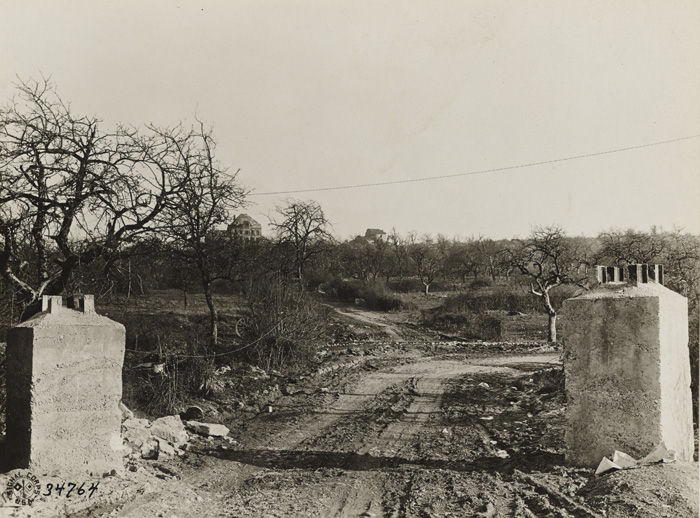
Reinforced tank obstacles built by Germans in all approached to hill of
Montfaucon. there were three of these in each road.
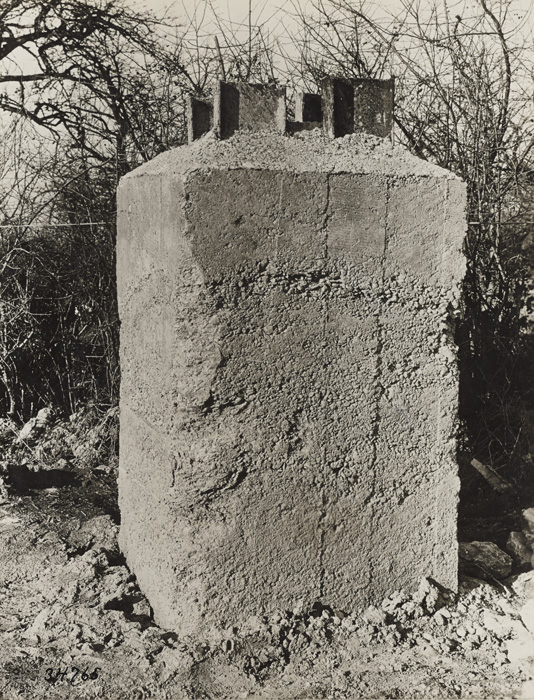
Close up of tank obstacle built by the Germans on approach to hill of
Montfaucon. There were three of these across each road, built of
solid concrete, one meter square two meters high and reinforced with
four 8 inch I-beams. They did not stop the American infantry.


















































